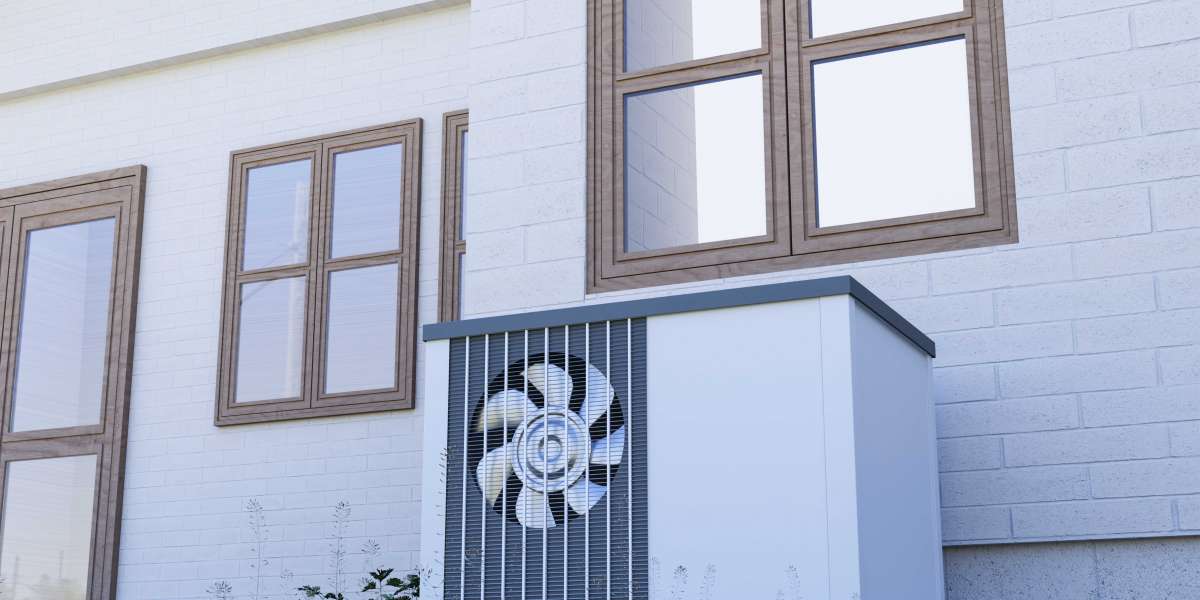In today's world, where energy efficiency and sustainability are becoming crucial factors for homeowners, Air Source Heat Pumps (ASHP) offer an innovative solution for heating homes. With rising energy costs and growing environmental concerns, investing in modern energy-efficient solutions like air source heat pumps is more relevant than ever. If you're looking to replace your old fossil fuel boilers and want to reduce your carbon footprint while minimizing home expenses, this guide will provide valuable insights.
What is an Air Source Heat Pump?
An air source heat pump is an energy-efficient system that extracts heat from the outside air to heat your home and provide hot water. Unlike traditional heating systems that rely on burning fuel, an ASHP uses a refrigerant cycle to absorb ambient heat from the air, even in colder temperatures. This makes it a sustainable alternative to conventional fossil fuel boilers, which contribute to greenhouse gas emissions.
How Does an Air Source Heat Pump Work?
An air source heat pump works similarly to a refrigerator but in reverse. It consists of three main components: an evaporator, a compressor, and a condenser. Here's how the process works:
- Absorbing Heat: The ASHP absorbs heat from the outside air using the evaporator. Even in temperatures as low as -20°C, the system can capture thermal energy.
- Compressing the Heat: The heat is transferred to a refrigerant, which is then compressed to increase its temperature.
- Releasing Heat: The hot refrigerant passes through a heat exchanger in the condenser, releasing heat into your home’s heating system.
Benefits of Air Source Heat Pumps
Investing in an air source heat pump offers several advantages that can significantly improve the energy efficiency of your home while reducing operational costs. Let’s dive into the key benefits:
- Energy Efficiency
One of the most significant advantages of an air source heat pump is its high efficiency. For every unit of electricity consumed, an ASHP can produce three to four units of heat. This translates into a COP (Coefficient of Performance) of 300-400%, making it much more efficient than traditional heating systems like gas or oil boilers.
- Lower Carbon Footprint
Switching to an air source heat pump can drastically reduce your home’s carbon emissions. Unlike gas boilers, ASHPs do not burn fossil fuels. By utilizing renewable energy from the air, they produce lower emissions, making them a greener choice.
- Cost Savings
Though air source heat pumps require an initial investment, they offer long-term cost savings. ASHPs are eligible for government incentives such as the Renewable Heat Incentive (RHI) in the UK or similar schemes in other countries, which helps offset the cost of installation. Over time, homeowners can save significantly on energy bills, particularly if they replace inefficient systems like oil or electric heating.
- Low Maintenance
Air source heat pumps are relatively low-maintenance compared to traditional boilers. Once installed, they require an annual service, and many systems can last over 20 years with proper care. This reliability reduces the need for constant repairs and replacements.
Types of Air Source Heat Pumps
There are two primary types of air source heat pumps: Air-to-Water and Air-to-Air heat pumps.
- Air-to-Water Heat Pumps
Air-to-water systems are commonly used for heating homes and providing hot water. They work by transferring heat into a central heating system, which then circulates warm water through radiators or underfloor heating. Air-to-water heat pumps are a good option for homeowners looking to replace traditional boilers.
- Air-to-Air Heat Pumps
Air-to-air heat pumps work by transferring heat directly into the air through an indoor unit. These systems are primarily used for heating and cooling, similar to air conditioners. However, they cannot produce hot water, making them less suitable for homes that require a complete heating solution.
Installation Considerations
Before installing an air source heat pump, it’s essential to evaluate whether your home is suitable for this type of system. Here are a few factors to consider:
- Insulation
Proper insulation is critical to maximizing the efficiency of an air source heat pump. If your home is poorly insulated, much of the heat generated by the ASHP will be lost, reducing its effectiveness. Make sure to insulate your walls, roof, and floors before installing a heat pump.
- Outdoor Space
Air source heat pumps require space outside your home for the installation of the external unit. This unit needs adequate airflow and should be placed in an open area, preferably away from walls, bushes, or fences.
- Existing Heating System
If your home currently uses radiators or underfloor heating, an air-to-water heat pump can easily be integrated into your system. For homes with ductless systems, air-to-air pumps may be a more suitable choice.
- Climate
While air source heat pumps can operate efficiently in cold climates, their performance may drop at very low temperatures. In such cases, a backup heating system may be necessary to supplement the ASHP during extreme weather conditions.
Government Incentives for Air Source Heat Pumps
Many governments are encouraging homeowners to switch to renewable energy sources by offering incentives for installing air source heat pumps. In the UK, the ECO4 scheme provides financial support to households that want to adopt renewable heating systems. Smart export guarantee (SEG) allows you to export electricity that you generate, but don’t use.
Similar programs are available in other countries, such as the Federal Tax Credits in the United States, which offer a percentage rebate on the installation cost of renewable energy systems like ASHPs.
These incentives can help offset the initial costs of installation, making air source heat pumps an affordable and sustainable choice for homeowners.
Conclusion
Switching to an air source heat pump is an excellent way to reduce your carbon footprint, lower energy bills, and invest in a more sustainable future. With government incentives, high efficiency, and low maintenance, ASHPs are becoming a popular alternative to fossil fuel-based heating systems. Whether you’re building a new home or retrofitting an existing one, air source heat pumps provide a versatile, year-round solution for heating and cooling.
By making the switch, you’re not only creating a more comfortable living environment but also contributing to a cleaner, greener planet.






